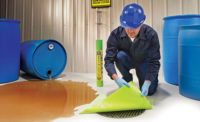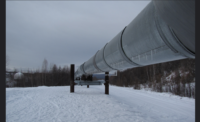Manufacturing facilities are some of the most vulnerable structures during a natural disaster. Complex layers of heavy materials and technology make it dangerous to inhabitants and the planet when debris becomes pollution. Fortunately, building managers can work with construction and geographic experts to formulate the best plan against climate hazards.
Performing a risk assessment
Before spending money on immense infrastructure and brand-new tech, managers should assess risk to understand where to allocate resources. Knowing the ins and outs of the place is advantageous for discovering weak points and opportunities for improvement.
For example, an inland area might not need hurricane-level protection but should consider torrential storms and flooding. Knowing the biggest threats protects facilities more holistically. Alternatively, an area with hazardous waste, radiation or intense electrical equipment might need more safeguards than the office portion of the building.
Leaders can check historical weather records or use tools like AI for their predictive analytics potential. Other options include government officials, scientific researchers, climate analysts and compliance regulators for industry-leading recommendations.
Writing a business continuity plan
Once the risk assessment is complete, a business continuity plan forms. This should include every detail about response and recovery. Here are suggestions of what to include:
- Alternative working locations
- Evacuation procedures
- Activation plans for backup power sources
- Contact information for emergency personnel
- Data backup and restoration plans
- How to communicate updates with third parties and supply chains
- Schedule for updating, practicing and verifying the validity of the continuity plan
- Variants of the plan for each type of natural disaster
Trends in sustainability may incite inclusions concerning the structure’s environmental impact during a disaster. If a company is concerned with connecting with eco-conscious customers and clients, how can it convey that part of its business continuity plan is to restore the region? Part of planning insinuates budgeting and resource allocation for these extra processes is already accounted for.
Building structural mitigation measures
Building professionals have plenty of resources for facilities on building codes and standards to withstand natural disasters. Adhering to these statutes is the best chance manufacturing leaders have against unexpected catastrophes.
For example, in the U.S., FEMA offers seismic-resistant building codes for earthquake-susceptible areas. There are similar suggestions for wind-resistant architecture for tornado and hurricane regions, such as impact-resistant windows and heavy roofing materials.
To prevent demolitions or building brand new facilities, managers can retrofit the most vulnerable aspects of their property first, slowly reinforcing it as resources allow.
Looking outside the facility itself into the landscape may offer even greater protection. Companies may plant vegetation to deter flooding or install erosion mitigation walls. Every manufacturer may have unique requirements based on what it produces, but many get creative by using nature to their advantage.
Installing early warning systems and monitoring
What good are the defenses facilities managers put in place if there is nothing to warn them of an oncoming concern? Warning systems, detection devices and monitoring tools are priceless because they ensure a safe manufacturing process. Reliable alarm systems allow employees to evacuate in an orderly fashion with the comfort of knowing they have plenty of time to act.
It might be hard to maintain environmental awareness in massive buildings, but monitors automate this for inhabitants. The Internet of Things, cameras, drones and smart tech are wonderful windows into real-time oversight.
Receiving early notice of inclement weather could save millions in facility damage. Around one inch of water might cause a $25,000 repair bill for a residential building — consider how this may compound to warehouses, manufacturing plants or larger outfits.
Obtaining critical equipment protection
If a natural disaster hits a facility, it is easy to think everything inside is lost. However, with smart equipment protection, much of the contents are salvageable depending on the event’s severity. For example, a data center with elevated flooring could save an entire operation if standing water doesn’t reach the towers.
The most common protective measures include backup power stores and generators. This may allow corporations to save crucial data after a power flicker. Many consider renewable energy sources and batteries to increase electrical resilience, specifically for disastrous scenarios.
Considering natural hazard insurance
Natural hazard insurance is an invaluable resource in case the event’s strength is too much for the building to handle. Coverage promises reimbursement and peace of mind to physically and financially recover. It may even cover supply chains or offsite storage depending on the policy.
Regions may have hazard-specific insurance, like hurricane coverage for coastal areas, separate from blanket policies. Availability relies on circumstances and geography. Consult with insurance professionals to determine recommended coverage values for the facility’s most likely disasters.
Weathering disasters with preparedness
Guarding a facility against unexpected hail or wildfire requires foresight and dismisses skepticism. It is essential to assume a disaster will happen one day instead of thinking a particular building will be the exception. Proper preparedness understands the volatility of modern weather patterns to protect its assets and workers.



